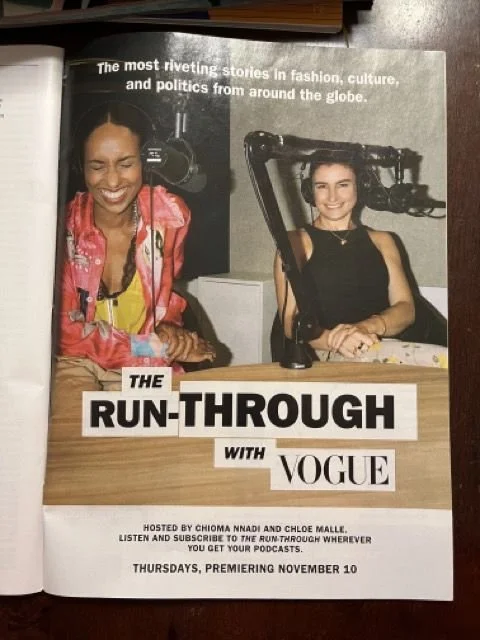Anna Wintour’s Enduring Reign
Vogue before Anna Wintour was traditional, unadventurous, and even slightly boring. Condé Nast was worried the title was losing its significance, and Anna Wintour was hired as Vogue’s editor-in-chief. Wintour held this position from 1988 to 2025, for 37 years.
During her time at Vogue, she revolutionized American fashion. Wintour seemed to truly understand the youth’s desires, the fashion of the time period during which she served, and the appeal of unconventionality, unlike previous editors. Her debut cover, which starred Micheala Bercu in a bejeweled top and jeans, was the first time denim appeared on Vogue. Wintour has left a major legacy on American Vogue, and her successor, 39-year-old Chloe Malle, has big shoes to fill.
Michaela Bercu, photographed by Peter Lindbergh and styled by Carlyne Cerf de Dudzeele. Wearing a Christian Lacroix jacket and Guess jeans. Images via Vogue by Leah Radnay.
As of early September, Chloe Malle was hired as Vogue’s new Head of Editorial Content. Malle, the daughter of actress Candice Bergen and film director Louis Malle, began working at Vogue in 2011 as a social editor, leading coverage of weddings and social events. In 2016, she became a contributing editor, and in 2023, she became editor of the Vogue website, which doubled traffic to the site. She is also co-host of Vogue’s podcast, The Run-Through.
Malle is no stranger to Vogue and the fashion and journalism industries, but her new role is unlike anything she’s done before. How will she go about it? What does this mean for American Vogue?
It’s clear that Wintour fully approves of Chloe Malle in her new role. She stated that “Chloe has proven often that she can find the balance between American Vogue‘s long, singular history and its future on the front lines of the new,” and is “excited to continue working with her, as her mentor but also as her student.” While speaking to the New York Times, Malle acknowledged that “no one is going to replace Anna,” as she is currently the Chief Content Officer for Condé Nast, the media company that owns Vogue. Therefore, Anna’s influence will not be completely gone. Wintour will continue to oversee all 28 international editions of Vogue, and she and Malle will work closely together in the near future.
Malle, of course, does plan on incorporating and emphasizing her own ideas, which will naturally reflect a new era of American Vogue. She stated to the New York Times that “whoever took on this job would not succeed if what they produced was ‘Anna lite.’” Meaning, her work as Head of Editorial Content will not directly imitate Wintour’s style; it will be original to her own taste. She agreed that “Placing [her] own stamp on this is going to be the most important part of this being a success. There has to be a noticeable shift that makes this [her’s],” she told the New York Times. Malle “believes issues should be released less frequently and around specific themes or cultural moments,” like collectables and wants to build a more direct, smaller, healthier audience, by giving original, witty, irreverent, joyful points of view on things.”
Carefully selected, heavier issues that are centered on current events will send a powerful message. They will cater to a certain audience, one with an interest in social and political issues, and how they relate to the art of fashion. While this route does have the power of expanding the intersection between politics, culture, and fashion, it puts Malle at risk of losing another critical demographic of consumers: those who rely on the short, monthly issues that they passively pick up off a magazine rack to read at the hair salon. Those who consider it a quick, fun beach read. After all, twelve issues, an issue a month, is what most Vogue readers are used to. It’s what they know. Malle must be careful to ensure all her subscribers are engaged as she begins the transition to personalizing American Vogue.
While there will inevitably be a change in Vogue’s style, both content and logistics-wise, the influence of Anna Wintour will very much remain present and alive. Wintour’s legacy is too powerful to die simply due to a change in editors. Many in the fashion industry agree that Anna Wintour is Vogue, and Vogue is Anna Wintour. Again, it has been confirmed that she is still working with and advising Malle.
Chloe Malle’s first print issue is projected to be published in about a year, and until then, we're left to speculate what’s to come for Vogue. Whether you're an avid Vogue subscriber, an experienced designer, or just someone who loves fashion.






